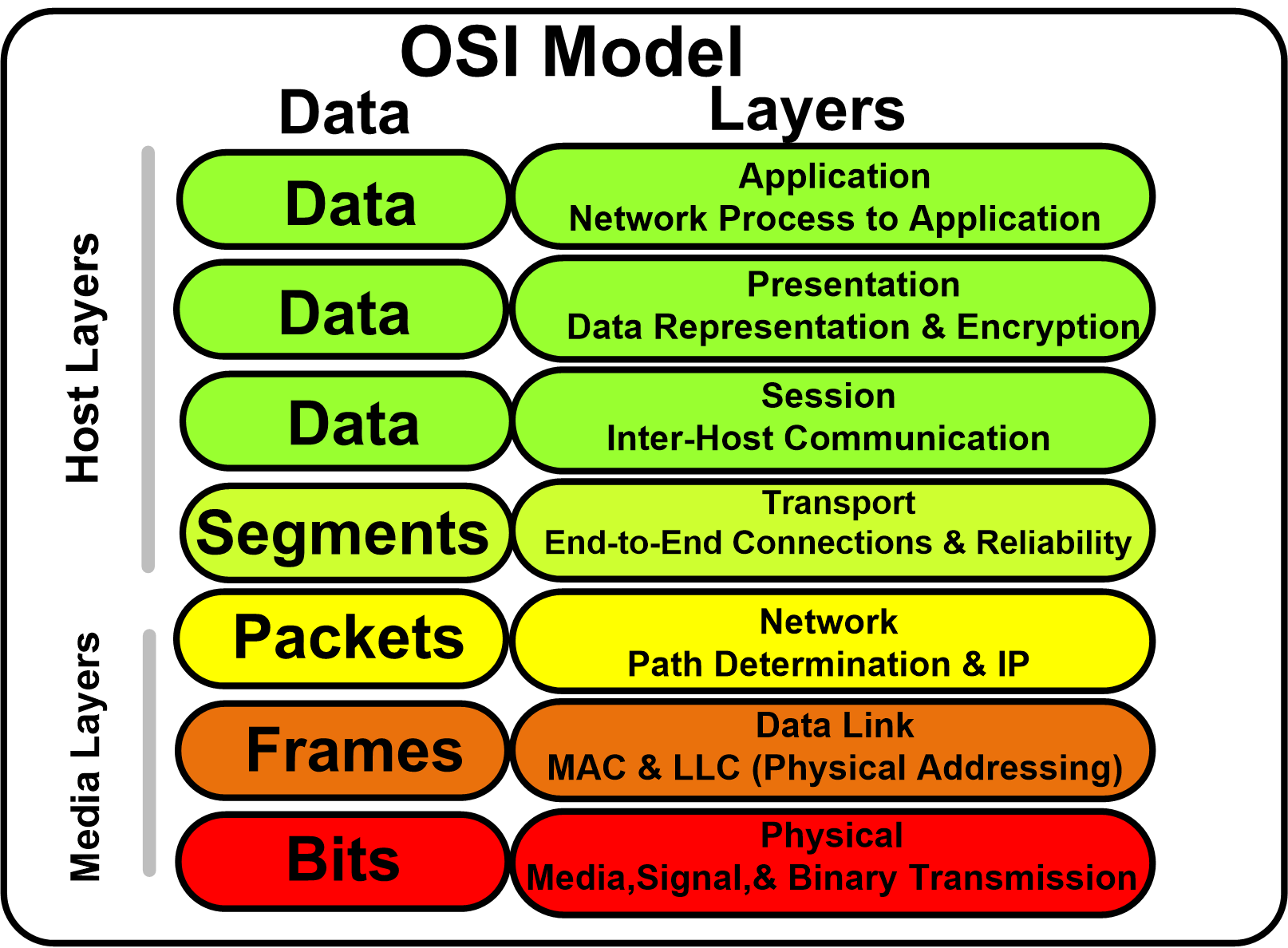Networking 101
Network is simply an interconnection of devices for data exchange purposes. We have various device which aid in communication between two devices, e.g routers, hub, switches etc.
we have two types of network protocols the OSI module (Open systems Interconnection) and the TCP/IP module (Transmission Control protocol) / (Internet Protocol).
OSI Module
we have two types of network protocols the OSI module (Open systems Interconnection) and the TCP/IP module (Transmission Control protocol) / (Internet Protocol).
OSI Module
- Consists of 7 layers each playing specific role.
- Each layer add a specific header to raw data on transmission.
- At reception the headers are eliminated until data arrives at the receiving application(Application layer).
These layers are arranged from bottom to up like from the illustration below.
 |
| OSI Model layer |
Each layer as described above has specific functions.
TCP/IP Module
- Consists of 4 layers
- More brief compared to the OSI module.
These are the layers arranged from bottom to up.
 |
| TCP/IP Module Layer |
With this you can gain an understanding of how data is converted from raw to human-understandable version.
In every device in the network is uniquely identified through various means:-
- Host name.
- IP address (Includes IPV6).
- Ports.
- MAC address.
Host Name
This is a unique device name whereby you can find out your device name(hostname) by
typing "hostname" on your terminal.
IP Address(Internet protocol address)
Also known as the logical address. is for device identification in a network.In the WWW (World Wide Web) or Internet, IANA(Internet Assigned Authority Numbers Authority) is responsible for assigning unique IP address to all device connected to the internet.
On your windows terminal type "ipconfig" to view your IP address and on your Linux terminal type "ifconfig" to view your IP address.
 |
| IP address |
MAC Address
Also known as the physical address it uniquely identifies each host on the network based on the NIC(Network Interface Card). The difference between MAC and IP is that mac is assigned on time of manufacture and cant be changed. With "ipconfig /all" in windows terminal you will get to see your NIC mac address and in Linux "ifconfig" still does it all.
 |
| Mac Address/ Physical address |
Port
Logical channel through which data is sent or received to an application. Ports are categorized in 3:
- Well known ports -> 0 - 1023
- Registered ports -> 1024 - 49151
- Ephemeral ports -> 49152 - 65535
"netstat -a" in your terminal lets view port that are in use in your machine.
 |
| Ports information |
Other Concepts:
Socket is a combination of a port and an IP address.
DNS( Domain Name System ) Server it resolves URL to its IP address saves you the hustle of remembering websites ip address. With "nslookup {url}" e.g nslookup www.google.com" resolves google.com IP address.
 |
| Nslookup |
ARP (Address Resolution Protocol) used in the "Data link layer" to resolve the receivers' machine MAC address. Converts ip address to corresponding mac address.
Hope you enjoyed the brief networking 101, feel free to leave a comment an addition or rectification. Adios!
Hope you enjoyed the brief networking 101, feel free to leave a comment an addition or rectification. Adios!


Post a Comment: